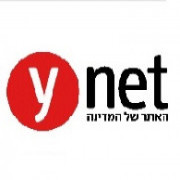The Limited Role of Party Cues in Appraisal of Low-Salience Policies | Public Opinion Quarterly
מאמר מאת קלרטה טרגר
קלרטה טרגר, דוקטורנטית במדע המדינה, מלגאית קרן גולדמן פרסמה מאמר בכתב עת מוביל במדע המדינה - Public Opinion Quarterly.
Abstract
What shapes Americans’ policy preferences: partisanship or policy content? While previous studies have addressed this question, many of them focused on high-salience policies. This raises an identification challenge because the content of such policies contains party cues. The current study employs a diverse set of low-salience policies to discern the unique effects of party cues and policy content, before the issues are “hijacked” by the parties. These policies are embedded in an original conjoint experiment administered among a national US sample. The design enables me to assess the effects of policy content and partisan sponsorship orthogonally. Contrary to previous studies, I find that respondents are attentive to policy content on low-salience issues, and it influences their policy preferences similarly or even more than party cues, across policy domains. Moreover, the support patterns and levels of Democrats and Republicans for many low-salience policies are similar. Party cues, by contrast, polarize partisans’ preferences across domains.





